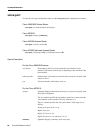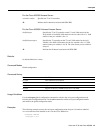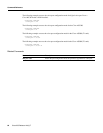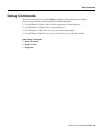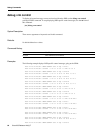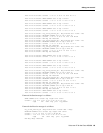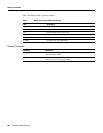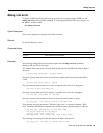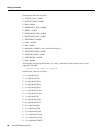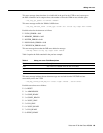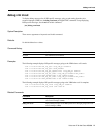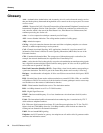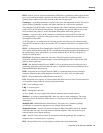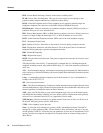
Glossary
72
Cisco IOS Release 12.0(7)T
Glossary
AAA—Authentication, Authorization, and Accounting. AAA is a suite of network security services
that provide the primary framework through which access control can be set up on your Cisco router
or access server.
ACOM—Term used in G.165, “General Characteristics of International Telephone Connections and
International Telephone Circuits: Echo Cancellers.” ACOM is the combined loss achieved by the
echo canceller, which is the sum of the Echo Return Loss, Echo Return Loss Enhancement, and
nonlinear processing loss for the call.
a-law—A voice compression technique commonly used in Europe.
ANI—Answer Number Indication. The calling number (number of calling party).
ARQ—Admission request.
Call leg—A logical connection between the router and either a telephony endpoint over a bearer
channel, or another endpoint using a session protocol.
CAS—Channel Associated Signaling. In E1 applications, timeslot 16 is used to transmit CAS
information. Each frame’s timeslot 16 carries signaling information (ABCD bits) for two of the
B channel timeslots.
CIR—Committed Information Rate. The average rate of information transfer a subscriber (for
example, the network administrator) has stipulated for a Frame Relay PVC.
codec—coder-decoder. Device that typically uses pulse code modulation to transform analog signals
into a digital bit stream and digital signals back into analog signals. In Voice over IP, it specifies the
voice coder rate of speech for a dial peer.
Data Link Connection Identifier (DLCI)—Frame Relay virtual circuit number corresponding to
a particular destination. The DLCI is part of the Frame Relay header and is usually 10 bits long.
Dial peer—An addressable call endpoint. In Voice over IP, there are two kinds of dial peers: POTS
and VoIP.
DNS—Domain Name System used to address translation to convert H.323 IDs, URLs, or e-mail IDs
to IP addresses. DNS is also used to assist in the location of remote gatekeepers and to reverse-map
raw IP addresses to host names of administrative domains.
DNIS—Dialed number identification service. The destination number.
DS0—A 64-Kbps channel on an E1 or T1 WAN interface.
DSP—Digital Signal Processor.
DTMF—Dual tone multifrequency. Use of two simultaneous voice-band tones for dial (such as
touch tone).
E.164—The international public telecommunications numbering plan. A standard set by ITU-T
which addresses telephone numbers.
E1—Wide-area digital transmission scheme. E1 is the European equivalent of a T1 line. The E1’s
higher clock rate (2.048 MHz) allows for 32 64-Kbps channels, which include one channel for
framing and one channel for D-channel information.
E&M—Ear and mouth RBS signaling.
Endpoint—An H.323 terminal or gateway. An endpoint can call and be called. It generates and/or
terminates the information stream.




